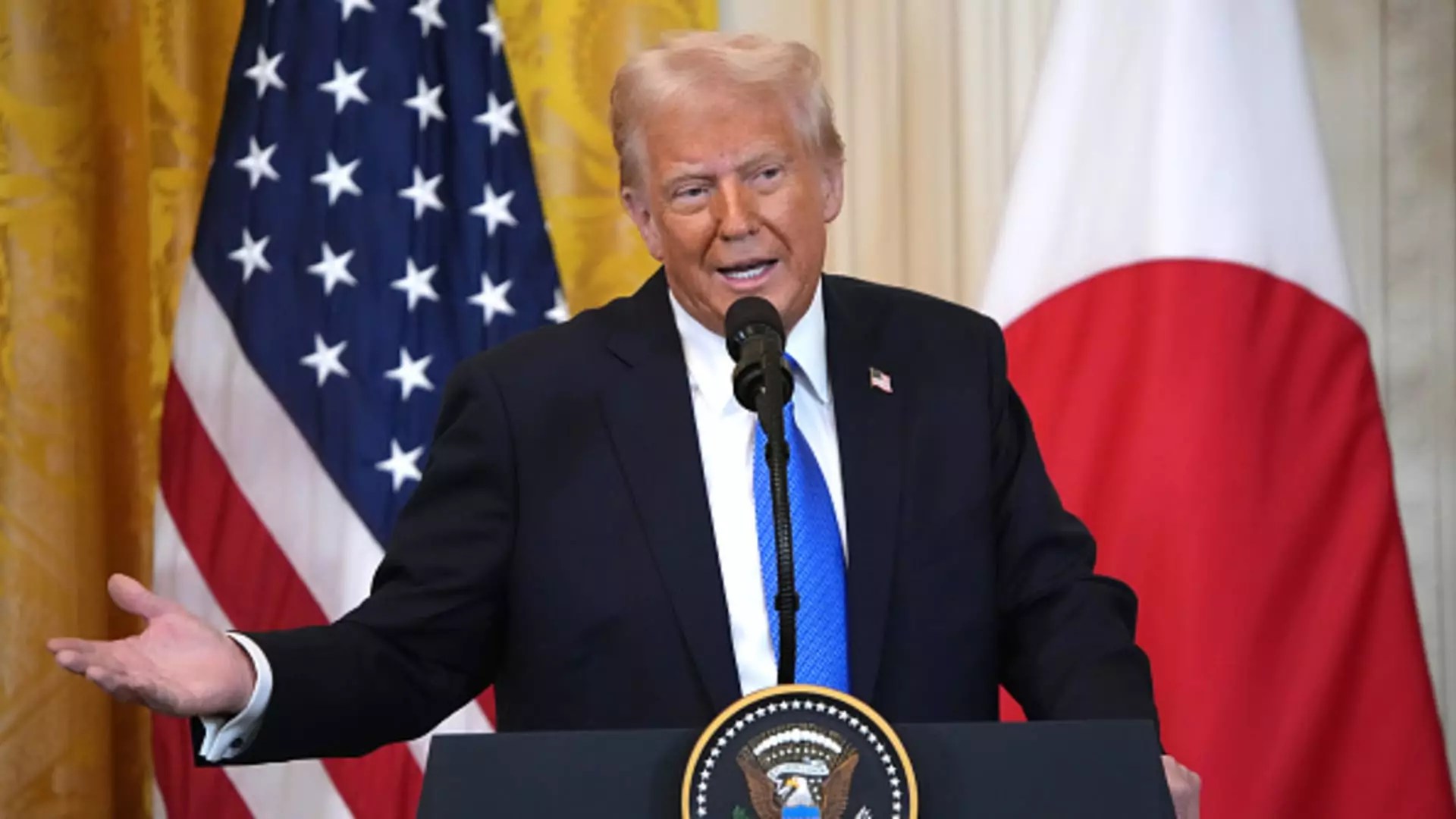The recent trade agreement between the United States and Japan is being heralded as a historic breakthrough, but beneath the surface lies a complex web of strategic gambles and potential pitfalls that deserve a more skeptical eye. While the media focuses on promises of job creation and economic growth, the reality reveals a fragile, and perhaps dangerously optimistic, economic plan that could backfire on both nations. It’s essential to interrogate whether this deal is truly a triumph or merely a distraction from deeper structural vulnerabilities.
At first glance, the claim of “reciprocal” tariffs at 15% might appear moderate, especially when compared to previous levels. Yet, this adjustment masks the underlying volatility of global trade and the shaky foundation of relying heavily on auto exports as a primary economic pillar for Japan. The industry, which accounts for nearly a third of Japan’s shipments to the U.S., is already under immense strain, evidenced by recent declines. Lowering tariffs is presented as a victory, but it ignores the long-term consequences of destabilizing such a vital sector. Are we truly fostering sustainable growth, or merely temporarily alleviating pressure while ignoring impending crises?
While Trump touts the $550 billion Japanese investment as a game-changer, the reality is far more ambiguous. Investment inflows are often driven by strategic economic pursuits rather than altruistic intent, and such a large figure may simply be a political illusion designed to bolster electoral support. Moreover, the claim that “90% of the profits” will go back to the U.S. raises questions about the real distribution of economic gains. Is this a genuine success for American workers, or a superficial headline designed to mask the unequal benefits of the deal?
Political Short-Termism and Internal Instability
Strikingly, the timing of this deal appears to be influenced by political calculations more than market logic. Japan’s Prime Minister Shigeru Ishiba is at a precarious political juncture, with recent electoral losses threatening his leadership. The agreement with the U.S. offers him a chance to shore up domestic support by positioning himself as a steady hand capable of securing crucial economic alliances. However, relying on trade agreements as political leverage flirt dangerously with short-termism, ignoring systemic issues that cannot be fixed with a single deal.
Additionally, the underlying political landscape in Japan suggests that this agreement might serve more as a Band-Aid than a solution. With calls for Ishiba’s resignation already circulating, the deal’s success could hinge more on political optics than genuine economic reform. In this precarious context, Japan may be trading long-term stability for immediate political survival, risking future instability and economic vulnerability once the short-lived gains fade.
Economic Reality vs. Political Spin
The numbers tell a more nuanced story. The slight uptick in Japanese stocks following the announcement should not overshadow the reality that exports to the U.S. are already declining. Auto exports, a cornerstone of Japan’s economy, have plunged over 25% even as they anticipate a lower tariff rate, highlighting the fragility of the sector. This contradiction underscores that the deal’s benefits might be marginal or overly optimistic, failing to address deeper structural issues like supply chain disruptions, technological shifts, and global economic uncertainties.
On the American side, the promise of increasing jobs and investments sounds promising but may be overly idealized. Economic theory warns us that trade deals often create winners and losers, with some domestic industries bearing the brunt of adjustments while others see fleeting benefits. The real test will be whether these projected job numbers are sustainable or simply a political rhetorical flourish aimed at placating a skeptical public. Historically, large trade deals have often resulted in displacement rather than renewal, and this agreement risks falling into the same trap.
This deal reflects a broader trend of political posturing disguising economic reality. While it might temporarily boost market confidence and serve political interests, it neglects the structural vulnerabilities that could undermine both the U.S. and Japan in the long run. Rushing into such agreements without addressing underlying issues—such as over-reliance on specific sectors and geopolitical tensions—risks setting both nations on a precarious economic path that could prove far more costly than the superficial gains suggest.

